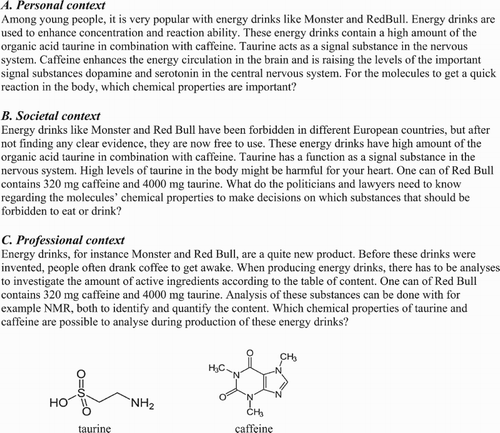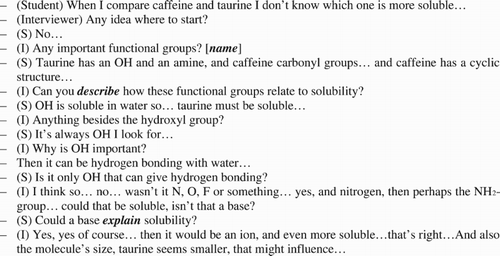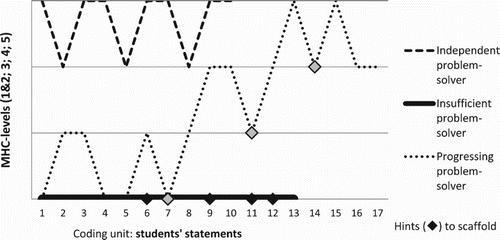Figures & data
Figure 1. Examples of open-ended context-based chemistry tasks on the topic of energy drinks in three different contextualizations.

Table 1. Overview about the operators used as specific prompts and their corresponding level of complexity.
Figure 2. An exemplary interview transcript showing the three different MHC-C-operators; name, describe, explain.

Table 2. The use of context information in students’ responses to the context-based chemistry problems (cf. Broman & Parchmann, Citation2014); number of responses and (in parentheses) the percentage of responses including context-related terms and examples.
Table 3. Distribution of student statements across the four levels of complexity before and after the interviewer provided at least one scaffold.
Table 4. Distribution of student complete answers across the four levels of complexity before and after the interviewer provided at least one scaffold.
Table 5. Exemplary excerpt from an interview transcript by one student labelled as independent problem-solver.
Table 6. Exemplary excerpt from an interview transcript by one student labelled as insufficient problem-solver.
Table 7. Exemplary excerpt from an interview transcript by one student labelled as progressing problem-solver.
Table 8. Students’ final solutions to the two problems they solved.
Figure 3. The categorisation of the students’ statements according to the MHC-C framework. The figure presents three interviews to exemplify each problem-solver type.

